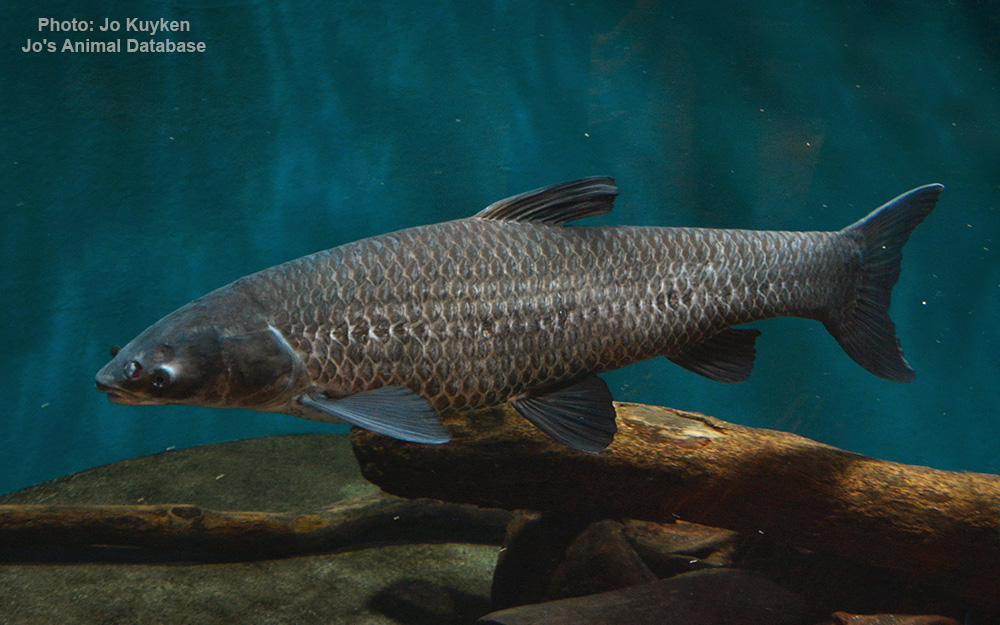Black carp
(Mylopharyngodon piceus)

Image source: Jo's Animal Database
Classification
General data
The black carp (Mylopharyngodon piceus) or black Chinese roach is a species of cyprinid fish and the sole species of the genus Mylopharyngodon.
It is native to lakes and rivers in East Asia, ranging from the Amur Basin, through China, to Vietnam.
It is widely cultivated for food and Chinese medicine.
One of the largest cyprinids in the world, the black carp can reach up to 1.9 m (6.2 ft) in length and 109 kg (240 lb) in weight.
It generally feeds on snails, clams, and mussels. The typical length is 60–120 cm (23.5–47 in).
Black carp, together with bighead carp, silver carp, and grass carp, make up the culturally important four famous domestic fishes used in polyculture in China for over a thousand years and known as Asian carps in the United States. Black carp are not as widely distributed worldwide as the other three.
In China, black carp are the most highly esteemed and expensive food fish among the four domestic fishes, and partly because of its diet and limited food supply, is the most scarce and expensive in the marketplace among the four famous domestic fishes.
Black carp in the United States
The black carp was first accidentally introduced into the United States during a grass carp shipment from Asia in the 1970s. The black carp was later intentionally introduced to the US in the 1980s for use in retention ponds and aquaculture facilities to manage yellow grub and snails populations. It was also to be used as food fish. However, flooding in the South caused these populations of carp to spread into the Mississippi watershed. They continued to spread via the Mississippi and Missouri Rivers, where they began to form wild populations.











